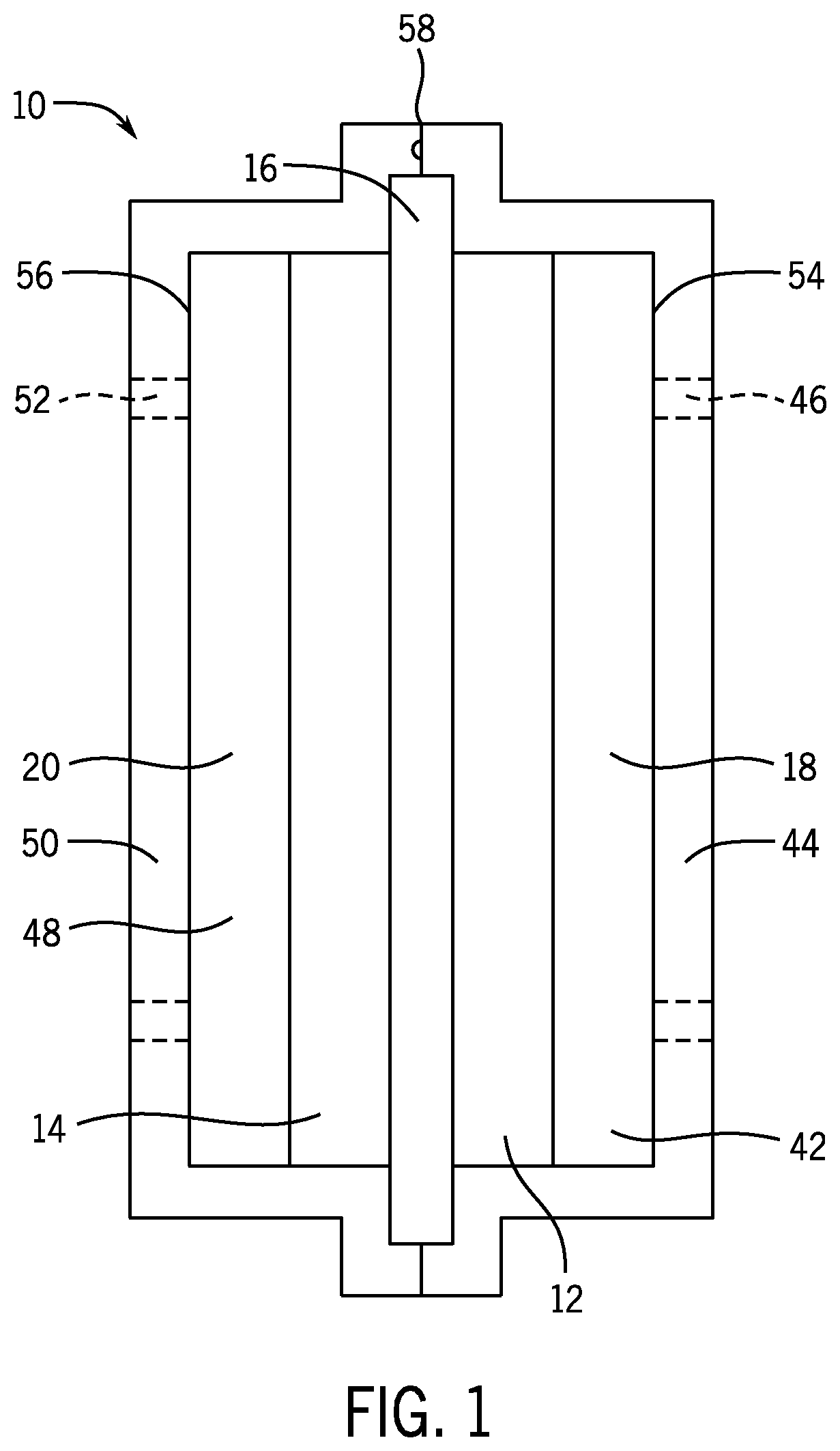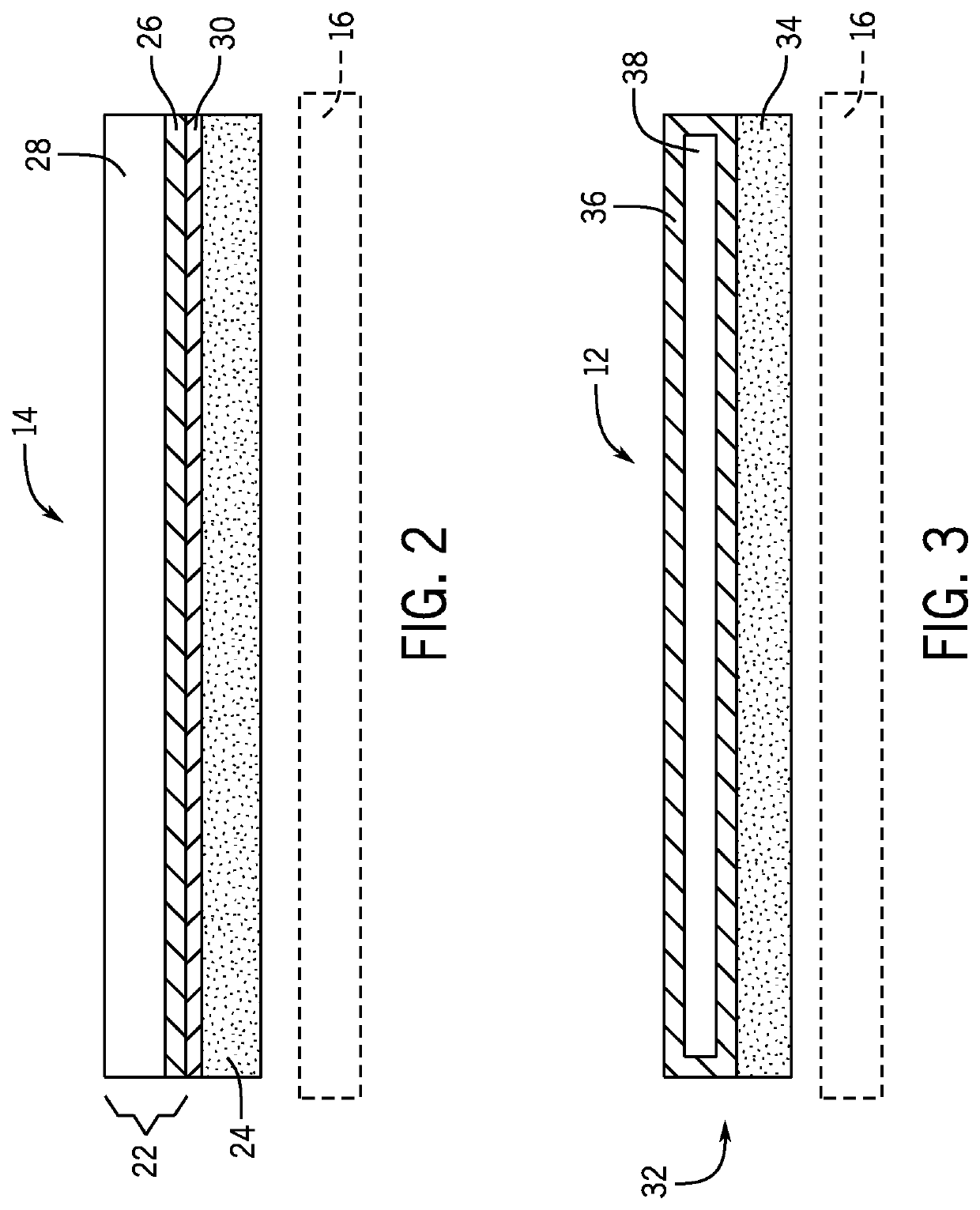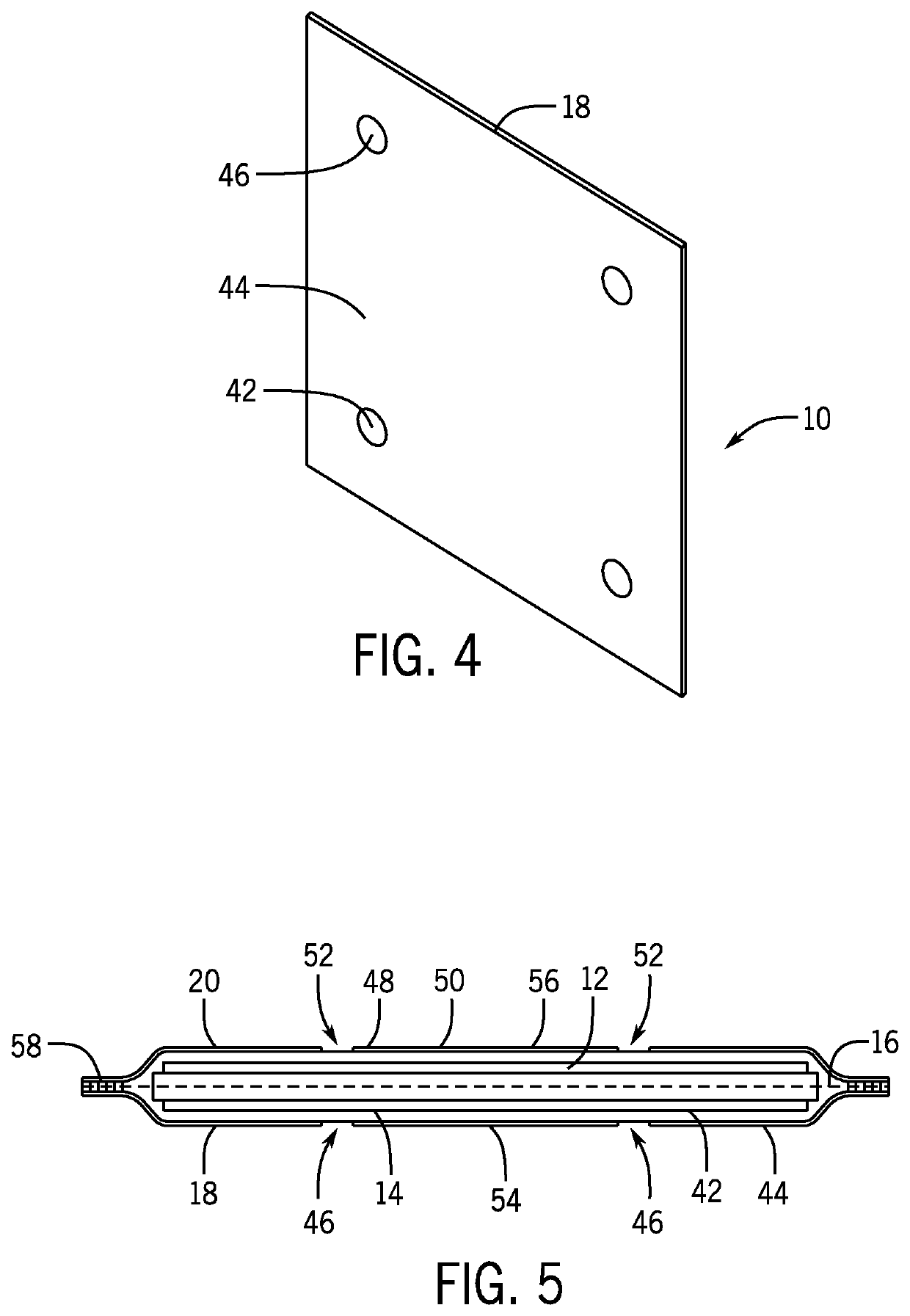Bipolar lead acid battery cells with increased energy density
a lead acid battery, bipolar technology, applied in the direction of cell components, final product manufacturing, sustainable manufacturing/processing, etc., can solve the problems of limited energy storage capacity and power delivery of the battery, low utilization rate, and insufficient use of the active components of the cell
- Summary
- Abstract
- Description
- Claims
- Application Information
AI Technical Summary
Benefits of technology
Problems solved by technology
Method used
Image
Examples
Embodiment Construction
[0019]Embodiments of the invention are directed to a bipolar lead acid battery having desirable energy density, specific energy, and discharge cycle characteristics. In each cell of the battery, non-electrochemically functional metallic lead is removed and the mass fraction of the active energy storing lead is increased in order to achieve these characteristics. Additionally, a conductive, chemically and electrochemically stable and durable bi-pole substrate composite is provided in the cell to support the positive and negative active masses while providing inter-cell electronic conductivity between them.
[0020]Hereinafter, a bipolar or pseudo-bipolar lead acid battery will be described with reference to drawings. Referring now to FIG. 1, a schematic illustration of an exemplary lead acid wafer cell 10 (hereinafter, “cell 10”) that forms part of a bipolar or pseudo-bipolar lead acid battery (hereinafter, “lead-acid battery”) is provided. The cell 10 includes a negative electrode 12 a...
PUM
 Login to View More
Login to View More Abstract
Description
Claims
Application Information
 Login to View More
Login to View More - R&D Engineer
- R&D Manager
- IP Professional
- Industry Leading Data Capabilities
- Powerful AI technology
- Patent DNA Extraction
Browse by: Latest US Patents, China's latest patents, Technical Efficacy Thesaurus, Application Domain, Technology Topic, Popular Technical Reports.
© 2024 PatSnap. All rights reserved.Legal|Privacy policy|Modern Slavery Act Transparency Statement|Sitemap|About US| Contact US: help@patsnap.com










